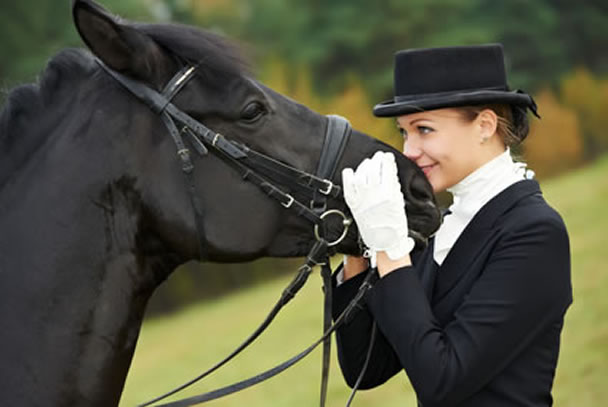How to train a horse with body language

You can learn how to train a horse effectively by laying a groundwork of basic communication at the beginning of the process. Once the basics are established, more advanced work comes easily.
There are many different horse training methods and philosophies. Before you choose how to train a horse in your care, take a few minutes to think about your own goals when it comes to horsemanship and your relationship with your horse. Are you only interested in competition, or is it important to you that your horse meets you at the gate, ears pricked, eager to join you for the day's ride?
Many training methods push the horse too fast. The stress that comes with that often leads to sour behavior and vices. When choosing how to train a horse, think of it from the horse's point of view. Does the training make sense to him? Is it physically demanding beyond what he can comfortably do? Does it involve lots of mindless repetition? (Lunging, done poorly, is a prime example of this.) Is he frequently punished? Or does he learn knew things that are interesting to him, gaining confidence and skills while bonding with you, his trainer? If the second option sounds more appealing to you, then you're not alone. But how do you get started?
For the horse, ground training is a great way to introduce basic training concepts that will later translate to riding. Teach your horse to yield to light pressure from the ground. The horse should back up from pressure on the halter or on his chest, yield his hindquarters from pressure on his side or flank, and yield the forequarters from pressure on the neck and shoulder. Teach your horse to sidepass along a fence and circle around you on a long rope, changing speed and direction on cue. Have your horse jump over small obstacles, stand on a pedestal and load on the trailer calmly.
As your horse gains confidence, sack him out with blankets, plastic bags, umbrellas, tarps, and eventually, the saddle. Teach him to ground drive, and when he gets good, take him out on trail "drives." Stash a pan of feed out on the trail somewhere, ground drive him out to find it, then let him eat it and ground drive him home. When he's totally comfortable with wearing the saddle and being driven, have someone lead him around while you lie across the saddle, and eventually sit on him. Then you can start again with the yields you practiced on the ground, replacing your hands and the halter with your legs and the reins.
Before long, you'll be yielding the forehand and hindquarters, backing up, sidepassing, and heading out on those familiar trails where you used to ground drive. Your horse will be confident and happy, and you'll be proud of the progress you've made-- deservedly so.
Add your comments
comments powered by Disqus
